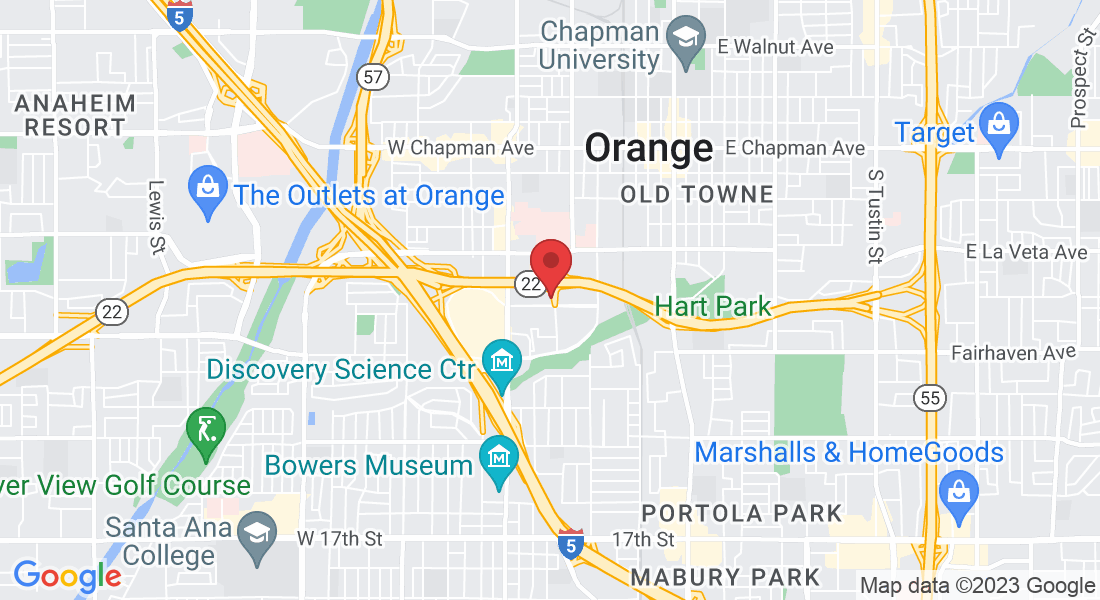JUVENILE CRIME

Juvenile Crime in California
In California, juvenile crimes (or delinquency) refers to criminal offenses committed by individuals under the age of 18. These offenses can range from minor infractions , such as truancy or vandalism, to more serious crimes like robbery and murder. Juvenile delinquency cases are handled in juvenile court, which operates differently than adult criminal court.
The goal of the juvenile justice system is to rehabilitate and reintegrate young offenders into society, rather than simply punishing them. As such, the court has a wide range of options for dealing with delinquent youth, including counseling, probation, and community service. Juvenile detention is used as a last resort for the most serious and violent offenders.
California has implemented several policies in recent years to reduce the number of youth incarcerated. Such as Senate Bill 439, which allows for certain non-violent offenders to be placed on probation rather than being sent to juvenile detention. Also, Senate Bill 823, which allows for certain juvenile offenders to have their records sealed upon reaching adulthood.
However, despite these efforts, California's juvenile detention facilities have been criticized for being overcrowded and understaffed, and for not providing adequate education and treatment services to incarcerated youth.
It's important to note that Juvenile Delinquency crimes are not the same as adult crimes, and the punishment and consequences are different. Juvenile offender's records are also sealed and not accessible to the public.
If you or your loved one has been charged with a juvenile crime, it is important to take the charges seriously and understand the potential consequences. You need an attorney who specializes in juvenile law and can advise you on the best course of action and represent you in court.
It is important to remember that a juvenile delinquency conviction can have long-term consequences, such as difficulty getting a job or being accepted into college. Lloyd & Coulter will help you achieve the best possible outcome for your case. Call today FREE and CONFIDENTIAL consultation.
Welfare and Institutions Code Section 707 lists some of the most serious crimes that could be committed by a Juvenile that may qualify them under certain circumstances to be tried as an adult in adult court as follows:
1. Murder.
2. Arson, as provided in subdivision (a) or (b) of Section 451 of the Penal Code.
3. Robbery.
4. Rape with force, violence, or threat of great bodily harm.
5. Sodomy by force, violence, duress, menace, or threat of great bodily harm.
6. A lewd or lascivious act as provided in subdivision (b) of Section 288 of the Penal Code.
7. Oral copulation by force, violence, duress, menace, or threat of great bodily harm.
8. An offense specified in subdivision (a) of Section 289 of the Penal Code.
9. Kidnapping for ransom.
10. Kidnapping for purposes of robbery.
11. Kidnapping with bodily harm.
12. Attempted murder.
13. Assault with a firearm or destructive device.
14. Assault by any means of force likely to produce great bodily injury.(15) Discharge of a firearm into an
inhibited or occupied building.
16. An offense described in Section 1203.09 of the Penal Code.
17. An offense described in Section 12022.5 or 12022.53 of the Penal Code.
18. A felony offense in which the minor personally used a weapon described in any provision listed in
Setion 16590 of the Penal Code.
19. A felony offense described in Section 136.1 or 137 of the Penal Code.
20. Manufacturing, compounding, or selling one-half ounce or more of a salt or solution of a controlled substance specified in subdivision (e) of Section 11055 of the Health and Safety Code.
21. A violent felony, as defined in subdivision (c) of Section 667.5 of the Penal Code, which also would constitute a felony violation of subdivision (b) of Section 186.22 of the Penal Code.
22. Escape, by the use of force or violence, from a county juvenile hall, home, ranch, camp, or forestry camp in violation of subdivision (b) of Section 871 if great bodily injury is intentionally inflicted upon an employee of the juvenile facility during the commission of the escape.
23. Torture as described in Sections 206 and 206.1 of the Penal Code.
24. Aggravated mayhem, as described in Section 205 of the Penal Code.
25. Carjacking, as described in Section 215 of the Penal Code, while armed with a dangerous or deadly weapon.
26. Kidnapping for purposes of sexual assault, as punishable in subdivision (b) of Section 209 of the Penal Code.
27. Kidnapping as punishable in Section 209.5 of the Penal Code.
28. The offense described in subdivision (c) of Section 26100 of the Penal Code.
29. The offense described in Section 18745 of the Penal Code.
30. Voluntary manslaughter, as described in subdivision (a) of Section 192 of the Penal Code.
Are You Under Investigation or Facing Criminal Charges?
CONTACT US 24/7:
We Accept Collect Phone Calls
DISCLAIMER:
The Law Offices of Lloyd and Coulter Disclaimer: The information on this website is for general information purposes only. Nothing on this site should be taken as legal advice for any individual case or situation. This information is not intended to create, and receipt or viewing does not constitute an attorney-client relationship.
Copyright 2023 Law Offices of Lloyd & Coulter
JUVENILE CRIME

Juvenile Crime in California
In California, juvenile crimes (or delinquency) refers to criminal offenses committed by individuals under the age of 18. These offenses can range from minor infractions, such as truancy or vandalism, to more serious crimes like robbery and murder. Juvenile delinquency cases are handled in juvenile court, which operates differently than adult criminal court.
The goal of the juvenile justice system is to rehabilitate and reintegrate young offenders into society, rather than simply punishing them. As such, the court has a wide range of options for dealing with delinquent youth, including counseling, probation, and community service. Juvenile detention is used as a last resort for the most serious and violent offenders.
California has implemented several policies in recent years to reduce the number of youth incarcerated. Such as Senate Bill 439, which allows for certain non-violent offenders to be placed on probation rather than being sent to juvenile detention. Also, Senate Bill 823, which allows for certain juvenile offenders to have their records sealed upon reaching adulthood.
However, despite these efforts, California's juvenile detention facilities have been criticized for being overcrowded and understaffed, and for not providing adequate education and treatment services to incarcerated youth.
It's important to note that Juvenile Delinquency crimes are not the same as adult crimes, and the punishment and consequences are different. Juvenile offender's records are also sealed and not accessible to the public.
If you or your loved one has been charged with a juvenile crime, it is important to take the charges seriously and understand the potential consequences. You need an attorney who specializes in juvenile law and can advise you on the best course of action and represent you in court.
It is important to remember that a juvenile delinquency conviction can have long-term consequences, such as difficulty getting a job or being accepted into college. Lloyd & Coulter will help you achieve the best possible outcome for your case. Call today FREE and CONFIDENTIAL consultation.
Welfare and Institutions Code Section 707 lists some of the most serious crimes that could be committed by a Juvenile that may qualify them under certain circumstances to be tried as an adult in adult court as follows:
Murder.
Arson, as provided in subdivision (a) or (b) of Section 451 of the Penal Code.
Robbery.
Rape with force, violence, or threat of great bodily harm.
Sodomy by force, violence, duress, menace, or threat of great bodily harm.
A lewd or lascivious act as provided in subdivision (b) of Section 288 of the Penal Code.
Oral copulation by force, violence, duress, menace, or threat of great bodily harm.
An offense specified in subdivision (a) of Section 289 of the Penal Code.
Kidnapping for ransom.
Kidnapping for purposes of robbery.
Kidnapping with bodily harm.
Attempted murder.
Assault with a firearm or destructive device.
Assault by any means of force likely to produce great bodily injury.
Discharge of a firearm into an inhibited or occupied building.
An offense described in Section 1203.09 of the Penal Code.
An offense described in Section 12022.5 or 12022.53 of the Penal Code.
A felony offense in which the minor personally used a weapon described in any provision listed in Section 16590 of the Penal Code.
A felony offense described in Section 136.1 or 137 of the Penal Code.
Manufacturing, compounding, or selling one-half ounce or more of a salt or solution of a controlled substance specified in subdivision (e) of Section 11055 of the Health and Safety Code.
A violent felony, as defined in subdivision (c) of Section 667.5 of the Penal Code, which also would constitute a felony violation of subdivision (b) of Section 186.22 of the Penal Code.
Escape, by the use of force or violence, from a county juvenile hall, home, ranch, camp, or forestry camp in violation of subdivision (b) of Section 871 if great bodily injury is intentionally inflicted upon an employee of the juvenile facility during the commission of the escape.
Torture as described in Sections 206 and 206.1 of the Penal Code.
Aggravated mayhem, as described in Section 205 of the Penal Code.
Carjacking, as described in Section 215 of the Penal Code, while armed with a dangerous or deadly weapon.
Kidnapping for purposes of sexual assault, as punishable in subdivision (b) of Section 209 of the Penal Code.
Kidnapping as punishable in Section 209.5 of the Penal Code.
The offense described in subdivision (c) of Section 26100 of the Penal Code.
The offense described in Section 18745 of the Penal Code.
Voluntary manslaughter, as described in subdivision (a) of Section 192 of the Penal Code. some stuff
Are You Under Investigation or Facing Criminal Charges?
Contact Us 24/7
Call: (714) 541-5055
Text: (714) 912-8245
Email: Contact@LloydCoulter.com
We Accept Collect Phone Calls

Disclaimer: The information you obtain at this site is not, nor is it intended to be, legal advice. You should consult an attorney for advice regarding your individual situation.
Contact Us 24/7
Call: (714) 541-5055
Text: (714) 912-8245
Email: Contact@LloydCoulter.com
We Accept Collect Phone Calls
Copyright 2021 Orange County Criminal Defense
PRIVACY POLICY | TERMS & CONDITIONS
DISCLAIMER:
The Law Offices of Lloyd and Coulter Disclaimer: The information on this website is for general information purposes only. Nothing on this site should be taken as legal advice for any individual case or situation. This information is not intended to create, and receipt or viewing does not constitute an attorney-client relationship.


